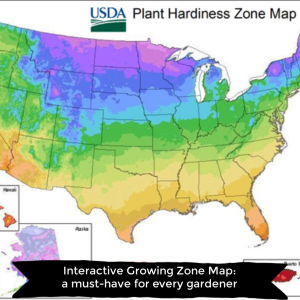If you are considering (or already have) a lake on your property, then you might be curious about pond plant maintenance. Here, a water feature expert shares the tips taking care of that task.
Spring Time and Your Pond Plants
As the ice begins to melt, you know that spring is right around the corner. Kick-off this pond season with your green thumb thawed out and divide your aquatic plants giving them the space to stretch out their roots. Typically, you should divide bog plants every one to two years, lotus and water lilies, every two to three years. Below is a simple how-to-guide. So gather up your glove, pruning tools, extra planting bags, planting media, and garden hose. Let’s start this party!
Bog Plants
Bog plants include species such as Dwarf Cattail, Blue Flag Iris, and Corkscrew Rush. These species have clumping roots, runners, or rhizomes, and the dividing process will vary depending on which kind of root mass the plant has. Here are tips on what to do:
- Raise the pot out of the water and carefully remove the root mass.
- Rinse off the soil from the root mass and trim away dead foliage.
- Divide the root mass for the type of root system it has. Plants that have clumping roots like the corkscrew rush, divide the roots into sections making sure roots are intact in each section. For plants with runners like dwarf cattails, you need to cut the runner and leave the root base with each of the sections. Irises are rhizome plants, and they are simply divided into sections.
- Each section needs to be replanted in its own pot and dispose of any overgrowth.
Water lilies & lotus
Water Lilies (hardy and tropical varieties) and water lotus are also pretty easy to divide. These plants have tubular root systems kind of like a potato. When you begin to notice that there are fewer pads, fewer blooms, or splitting pots, it’s a sign that the tubers need to go their separate ways.
- Raise the container out of the water, find the tuber and carefully remove it.
- Rinse away the soil and trim the dead leaves and root growth.
- Locate the crowns or buds where the pad will sprout, and carefully cut between them using a sharp knife. These sections will grow to be a new plant, so you will need each section to be three to four inches in length.
- Plant the sections separately at a 45-degree angle keeping the growing tip exposed above the planting media.
- Place the repotted plants in shallow water with three to six inches of water above the growing tip.
- The plant can be moved into deeper water after the leaves are above water.
Fertilize & Maintenance Through Summer
Adding fertilizer tablets every couple of weeks with ensuring that your plants are receiving the nutrients they need to produce robust blooms. Regularly remove any dead foliage to keep these vibrant beauties looking their very best. Last, but not least, enjoy your show-stopping water garden!
Prep Pond Plants for the Winter Chill
As the temperatures start to lower and it becomes time to shut down your pond, you will need to give your plants some pre-winter attention. For those of you that live in a frost-free climate, congratulations! All that is required for you is to follow the summer routine. For those of you that are in the chillier climates, below are some great tips to help you prepare your plants for Jack Frosts’ arrival.
Know your zone:
Like terrestrial plants, aquatic plants are vulnerable to the varying temperatures.
The USDA Hardiness Zone Map is based on minimum winter temperature averages and the source for determining which plants will do when in a specific location. Begin by identifying which plants are in your zone and which ones are not.

Tips based on your hardiness
- Hardy Plants: Hardy water lilies, submerged plants, and other plants designed to withstand your hardiness zone are relatively easy to winterize. Trim away the foliage after the first hard frost, carefully sink your hardy pants to the deepest location of your pond, and they will simply go dormant until spring. For bog plants, pull them back up as soon as the ice thaws so they can continue growing.
- Floating Plants: The most susceptible to frost are water lettuce and other floating plants. These types of aquatic plants should be treated as annuals and simply discard them after the first freeze. Thankfully these plants are relatively inexpensive to replace. Add them in the spring and they will grow quickly.
- Tropical Bulbs: Lilies, canna, other plants with bulbs, and tubers that prefer higher temperatures than your climate will need to take a winter break from your water garden. You can try to grow these plants indoors, or they can become dormant.
- Tropical Bog Plants: The Yellow Snowflake is ironically intolerant of the snow and freezing temperatures. This species, along with all other tropical bog plants can be treated as annuals, or you can bring them indoors to put your indoor gardening skills to the test. Should you choose to try wintering these plants indoors, you will need to keep them wet, but standing water is not necessary. Be mindful of the fact that with the shorter days, you will want to consider adding supplemental light, so they get the 10 to 14 hours that they need.
Aquatic plants are not only a beautiful addition to your pond. Indeed, they are a vital part of your pond’s ecosystem. With proper year-round care for your precious aquatic plants, you will ensure their survival through the seasons over the years!

